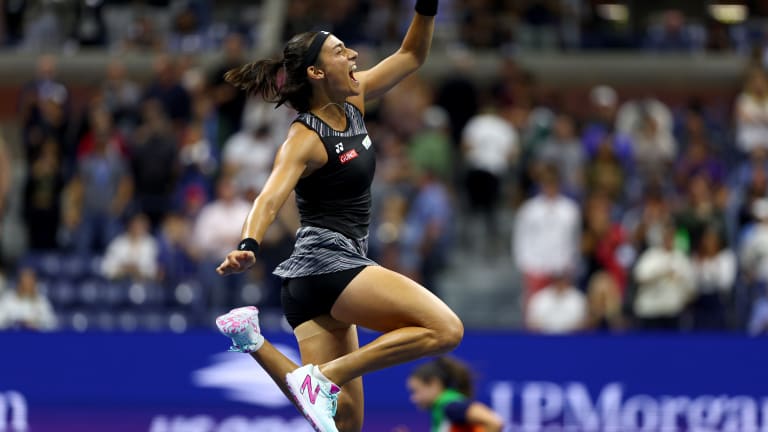2022 Year In Review
Top 5 WTA Players of 2022, No. 2: Caroline Garcia
By Dec 08, 20222022 Year In Review
The Baseline Awards: Tearjerker Moment
By Dec 22, 20222022 Year In Review
The Baseline Awards: Biggest Question Mark
By Dec 21, 20222022 Year In Review
The Baseline Awards: Patriotic Performance
By Dec 20, 20222022 Year In Review
The 2022 Baseline Awards: Dual Threats
By Dec 19, 20222022 Year In Review
Top Fashion Moments of 2022: When Serena Williams twirled away in a diamond-encrusted dress
By Dec 17, 20222022 Year In Review
Top 5 ATP Players of 2022, No. 1: Carlos Alcaraz
By Dec 16, 20222022 Year In Review
Top Fashion Moments of 2022: When Jelena Ostapenko made you lewk
By Dec 15, 20222022 Year In Review
Top 5 ATP Players of 2022, No. 2: Rafael Nadal
By Dec 15, 20222022 Year In Review
Top Fashion Moments of 2022: Is Casper Ruud the style heir to Roger Federer?
By Dec 14, 2022Top 5 WTA Players of 2022, No. 2: Caroline Garcia
Off the radar to start the season, the Frenchwoman finished inside the Top 5—her highest ranking in four years—after a career-redefining effort.
Published Dec 08, 2022
Advertising
Advertising

After battling an ankle injury, Garcia returned to the WTA Finals for the first time since 2017.
© Getty Images
Advertising

Garcia won four singles titles across multiple surfaces: one on grass (Bad Homburg) and clay (Warsaw), and two on hard-courts (Cincinnati, WTA Finals).
© Getty Images
Advertising

She amassed a 13-match winning streak this summer after lifting the Cincinnati trophy and reaching the US Open semifinals.
© Getty Images